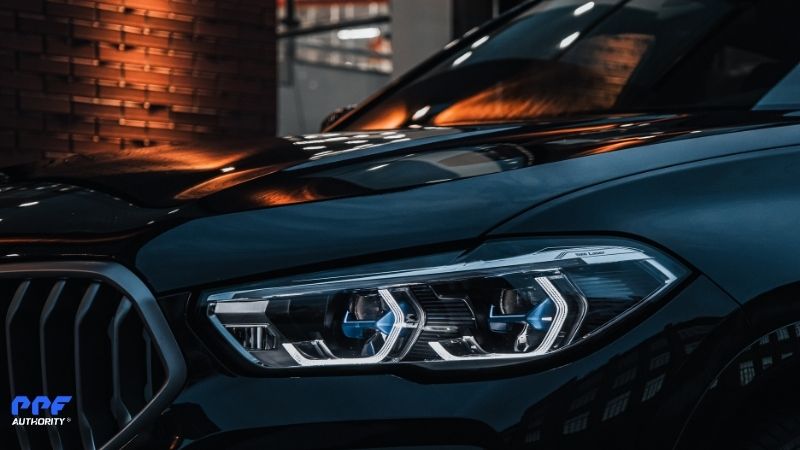Colored Paint Protection Film (PPF) is a popular choice for vehicle owners who want to combine a customized appearance with the durability of paint protection. However, one major concern is fading over time due to exposure to UV rays, sunlight, and environmental factors.
Thankfully, high-quality color PPF is designed to resist fading, ensuring that your vehicle maintains its bold, vibrant look for years. This article explores the features that make color PPF fade-resistant, the science behind its durability, and how it compares to other customization options.
How Fading Occurs and Why It’s a Concern
Fading occurs when environmental factors break down the pigments or coatings on a surface. For vehicles, this is typically caused by:
- UV Radiation: Prolonged sun exposure degrades pigments and weakens color vibrancy.
- Oxidation: Oxygen and moisture interact with surfaces, leading to discoloration.
- Chemical Exposure: Road salts, bird droppings, tree sap, and pollution can accelerate fading.
Fading isn’t just a cosmetic issue—it makes a vehicle look older, less maintained, and can reduce its resale value.
What Makes Color PPF Resistant to Fading?
1. UV Inhibitors
- How They Work: UV inhibitors are added to the film’s outer layer to block harmful ultraviolet rays.
- Benefits:
- Prevents UV radiation from degrading the pigments.
- Protects the car’s original paint from fading.
2. Advanced Pigmentation Technology
- How It Works: Specially engineered UV-stable pigments resist fading even under extreme conditions.
- Benefits:
- Ensures consistent, vibrant colors.
- Maintains a uniform appearance across all panels.
3. Multi-Layer Construction
- How It Works: High-quality color PPF consists of multiple protective layers.
- Benefits:
- Adds extra protection against oxidation, UV rays, and chemicals.
- Keeps the film looking new, even in harsh environments.
4. Hydrophobic Coating
- How It Works: A hydrophobic topcoat repels water, dirt, and contaminants.
- Benefits:
- Prevents buildup of grime that can dull the color.
- Makes cleaning easier, preserving vibrancy.
Comparing Color PPF to Other Vehicle Customization Options
1. Paint Jobs
- Fading Issues: Traditional paint is highly vulnerable to UV damage.
- Color PPF Advantage: UV-blocking properties ensure longer-lasting vibrancy.
2. Vinyl Wraps
- Fading Issues: Vinyl wraps lack UV inhibitors and fade faster.
- Color PPF Advantage: Superior fade resistance ensures longer durability.
3. Aftermarket Accessories
- Fading Issues: Decals and trim pieces are made from less durable materials.
- Color PPF Advantage: Its durability and fade resistance make it the better long-term choice.
How to Maximize Fade Resistance with Color PPF
1. Wash Regularly
- Use pH-neutral soap and microfiber cloths to remove dirt.
- Avoid abrasive sponges that could damage the film.
2. Park in Shade
Although color PPF resists UV rays, minimizing direct sun exposure helps extend its life.
3. Avoid Harsh Chemicals
Avoid ammonia-based cleaners or solvents that could degrade the topcoat.
4. Use Ceramic Coatings
Some installers offer ceramic coatings for PPF, which enhance protection and add extra UV resistance.
How Long Does Color PPF Stay Vibrant?
Premium color PPF lasts 5–10 years without significant fading. Its longevity depends on:
- Climate: Hot, sunny areas require strong UV resistance.
- Driving Habits: Frequent exposure to road debris and chemicals can affect durability.
- Installation Quality: Professional installation ensures proper adhesion and prevents premature fading.
Why Professional Installation Matters
Installing color PPF requires expertise for a flawless application. Professionals use high-quality materials and advanced techniques to maximize durability.
What Professionals Offer:
- High-Quality Films: Trusted brands with advanced UV protection.
- Precision Tools: Pre-cut templates for a perfect fit.
- Warranty Coverage: Many professionals offer warranties against fading.
Conclusion
Color PPF is the best solution for maintaining a vibrant, customized look while protecting your vehicle. Its UV inhibitors, advanced pigments, and multi-layer construction make it highly resistant to fading.
By choosing high-quality PPF and professional installation, you ensure a bold, long-lasting aesthetic that enhances your vehicle’s value. Whether you’re shielding your car from UV damage or adding a stylish new color, color PPF is a smart, long-term investment.
